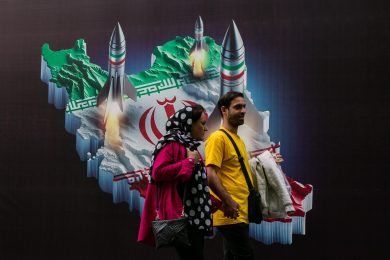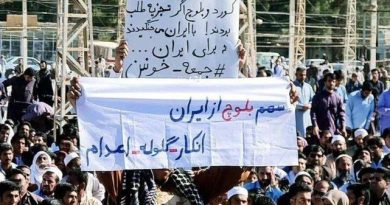In the streets of Iran, the quiet act of removing a headscarf has become one of the boldest forms of resistance. For decades, Iranian women have lived under a regime that uses the mandatory hijab law not only as a dress code but as a symbol of control over their bodies, voices, and presence in public life. Today, defying the hijab is not merely a cultural protest—it’s a demand for bodily autonomy, human dignity, and national freedom.
This piece explores why women’s bodily autonomy—the right to choose what to wear, how to appear, and how to live—is at the heart of Iran’s broader struggle for justice and democracy.
1. The Roots of Compulsory Hijab in the Islamic Republic
• Introduced shortly after the 1979 Islamic Revolution.
• Enforced by morality police and supported by the Islamic Revolutionary Guard Corps (IRGC).
• Becomes a tool for regulating not just clothing, but movement, speech, and social behavior of women.
• The hijab law is codified oppression, forcing women into invisibility and submission.
2. Bodily Autonomy as a Political Statement
• In Western contexts, bodily autonomy is often linked to reproductive rights.
• In Iran, it’s about the basic right to wear what one chooses and exist freely in society.
• The act of removing the hijab in public becomes a statement of self-ownership.
• Women are arrested, beaten, or even killed (e.g., Mahsa Amini) for this act.
3. Mahsa Amini: A Turning Point in the Movement
• 22-year-old Kurdish Iranian woman arrested by the morality police in 2022.
• Died in custody—sparking national outrage and global protests.
• Her death turned the hijab into the symbol of systemic injustice in Iran.
• The “Women, Life, Freedom” movement emerged, driven largely by bodily autonomy demands.
4. Women as the Frontline of the Resistance
• From schoolgirls to grandmothers, women defy the hijab law in public spaces.
• Videos of unveiled women walking in Tehran, Shiraz, and Isfahan go viral.
• Women face threats of expulsion from universities, job loss, and imprisonment—but resistance grows.
• Acts of defiance have spread to include boycotts of state institutions and mass civil disobedience.
5. The IRGC’s Role in Enforcing Patriarchal Control
• IRGC plays a major role in surveillance, arrests, and intelligence gathering against women’s rights activists.
• Women like Narges Mohammadi, Nasrin Sotoudeh, and Sepideh Gholian have been arrested, tortured, or exiled.
• Hijab enforcement is tied to larger ideological goals of the IRGC—to suppress pluralism and democratic expression.
• Control over women’s bodies is used as a means of controlling society as a whole.
6. Intersectionality: Ethnicity, Class, and Gender
• Bodily autonomy intersects with ethnic oppression (e.g., Kurdish, Baluchi women).
• Working-class women often face the harshest consequences for resisting the hijab law.
• The movement is not elite-led—grassroots women from all backgrounds are at the center of this revolution.
7. The Digital Battlefield: Fighting for Autonomy Online
• Social media becomes a powerful tool—hashtags like #MahsaAmini, #No2Hijab gain global traction.
• The IRGC launches cyber attacks, surveillance, and misinformation campaigns to suppress digital activism.
• Despite censorship, Iranian women continue to organize, share, and resist online.
• The fight for bodily autonomy is also a fight for digital freedom.
8. The International Response
• Global protests erupted in 2022 and 2023 in solidarity with Iranian women.
• The European Parliament and human rights groups have called for sanctions on IRGC officials.
• Iranian diaspora plays a major role in amplifying voices, lobbying for change, and creating international pressure.
9. Bodily Autonomy as a Blueprint for National Freedom
• The demand to choose what to wear is symbolic of the larger struggle for choice in governance, identity, and future.
• Bodily autonomy challenges the core authoritarian structure of the Islamic Republic.
• Women’s fight for control over their own bodies is linked to freedom of expression, religion, political participation, and more.
10. Where the Movement Goes from Here
• Hijab resistance continues despite crackdowns—there is no turning back.
• Women-led civil disobedience is evolving into a sustainable political force.
• Bodily autonomy is now understood by many Iranians as the foundation of true democracy.
• The regime may try to tighten control, but the culture of resistance has already shifted.
Conclusion: Freedom Begins with the Body
The battle over the hijab is not just about clothing. It is about autonomy, voice, agency, and freedom itself. In Iran, women are showing that the personal is deeply political, and by reclaiming their bodies, they are reclaiming the future of the nation.
Their defiance has become the moral backbone of Iran’s freedom movement, and their fight deserves unwavering global solidarity.
Join Our Newsletter!
Stay informed with the latest updates, news, and ways to take action in the fight for justice and global security. Sign up now to get updates delivered straight to your inbox!





